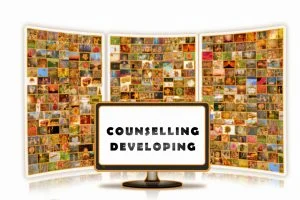
Listen to the story
Edtech contributes and sometimes is critical to be able to implement the latest findings of pedagogical innovation in practice. The following model that is based on Cornelis Adrianus van Dorp’s research forms a dynamic foundation for educational innovation especially since it is integrated with the development of the digital society. -information- and communication technology The general pedagogical toolbox includes five tools/approaches where often a mix of different pedagogies forms the best performing learning efficiency and quality. This approach directly connects to all other approaches below. Where its importance has increased tremendously in the digital society’s more human-centred development and with many different forms of contents, especially digital contents. In this spirit, the student has to learn to analyse sources and content since the accessibility to information is almost unlimited. And at the same time, study skills, in general, are equally more important than during the industrial society. Since the old teaching by telling approach that then ruled with an authoritative style, rarely offered any room for a second opinion. Today, with a second, third, fourth and more opinions one click away, study skills must also improve along with source and content analysis skills. Of course, the industrial society approach to learning is still a vital form of pedagogy in the classroom. Even though the general trend is that it more and more is becoming an approach among others. This approach comes in many different forms including exercises that are more self-governed learning on a group level, project-based learning, a lab for both natural- and societal science, simulations (digital) and role-play (real-world or/and digital) etc. The main driving-forces are human interaction, real-time events, group- and/or individual decision-making and strategy, and learning by doing. In other words, goal-driven active learning and development of skills. This approach includes personalised learning and relation-based learning, meaning teacher and student collaboration to build learning paths, coaching and mentorship, support-based learning with follow-up and one-to-one teaching. As the student can work more independently with support from technology and new approaches. The teacher will have more time to adapt personalised qualitative teaching and support. From the four cornerstones and with the fast development of technology as the driving-force , more workable approaches are certainly waiting around the corner. The four cornerstones and combinations of the four pedagogical approaches and new pedagogical methods give a workable framework for the development of Digital Society School. The learning design should start from the pupil’s perspective, not the one-size-fits-all approach. To develop qualitative efficient interactive books and tools for learning that engage the pupil’s mind. A great guide to develop such experiences is the 6iModel that you can learn more about in my book Learning Design in Practice for Everybody and our Learning Centre. Written by Author of the book Learning Design in Practice for Everybody and Learning Design Consultant and developer of SOE PublishingLab We offer counselling based on 34 years of combined experience of digital learning in pedagogy, development, results management, practical experience as online teachers and blended learning. Click here to learn more Blog post about the services: Storytelling is taking Organisational Growth to a new level FREE Learning Centre for interactive book development and UX design in general. The Learning Centre is open, no registration or login will be required. Click for more information about the Learning Centre on our business blog Opens in a new tabThe model consists of four cornerstones:
-neurological- and educational research
-the students- and the learning environment’s spatial prerequisites
-learning objectives and goalsFive pedagogical approaches
1. introduction-based teaching – preparing for learning
2. teaching for a group – formal learning including teaching by telling
3. collaborative learning – less formal, more creative and exploring learning
4. self-studies – more self-governed learning on an individual level
5. development of future pedagogical approaches
Digital Society School – how to develop the foundation
LarsGoran Bostrom©Learning Design Consulting Services from B-InteraQtive Publishing
Services from eLearningworld Europe AB





